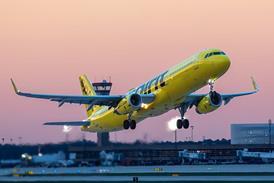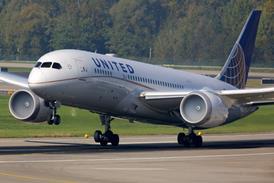These are summaries of final accident and incident reports that have been published during the six months since the last "20-20 hindsight" column
The Hellenic Air Accident Investigation and Aviation Safety Board's (AAIASB) report on the 14 August 2005 Helios Airways Boeing 737-300 crash near Grammatikos, Greece, revealed that flight data recorder (FDR) information proves that crew and passengers gradually lost consciousness from lack of oxygen. The data shows cabin altitude increased almost in line with the 737's height as it climbed out of Larnaca, Cyprus. Non-volatile memory in the pressurisation control unit has proved the unit was set to "manual" throughout the flight when it should have been set to "auto" during the pilot's pre-flight checks. The FDR printout indicates the cabin altitude warning horn had operated continuously from the time it was first triggered during the climb through about 10,000ft (3,000m), but air traffic control recordings revealed that the crew were confused because the audio alert is the same sound as that for the take-off configuration warning. The report criticises the Cyprus Department of Civil Aviation (DCA) for its lack of safety oversight of Helios's maintenance documentation and operational practices. There are 11 recommendations intended to reduce the chances of a similar event, and these are aimed at the DCA, the European Aviation Safety Agency, the European Joint Aviation Authorities, and the International Civil Aviation Organisation. Chief investigator Akrivos Tsolakis makes it clear that he thinks agencies like these have failed to anticipate the degree of risk associated with failure to pressurise, and therefore to set appropriate standards and recommended practices.
The US National Transportation Safety Board has lambasted the Federal Aviation Administration for the second time in the past 12 months for its failure to exercise safety oversight in the Part 135 "air taxi" on-demand charter sector. The final report on the 2 February 2005 accident involving a Platinum Jet Management (PJM) Bombardier Challenger 600 at Teterboro airport, New Jersey, which destroyed the aircraft when it ploughed across a six-lane highway into buildings after a failed take-off attempt, says the primary cause of the accident was the failure of the flightcrew to "appropriately determine the airplane's weight and balance characteristics for take-off". This resulted in a forward centre of gravity that prevented the aircraft from rotating successfully. The aircraft was flying under the operating certificate of Darby Aviation, and the NTSB observes: "PJM pilots routinely improperly modified airplanes' weight and balance forms, using a variety of invalid airplane empty weights to ensure that the form indicated that the airplane was operating within its limitations." The NTSB adds: "Although FAA personnel reviewed Darby's record, they did not ensure that PJM's airplanes were operated and maintained in accordance with Darby's company requirements, or that charter trips flown by PJM were controlled by Darby." The NTSB had drawn similar conclusions in its report on the November 2004 icing-related Challenger 601 fatal crash during take-off at Montrose, Colorado. The NTSB said the chartered aircraft "was registered to Hop-a-Jet, and operated by Air Castle doing business as Global Aviation Glo-Air Flight 73", and the client did not know which company was responsible for conduct of the service.
Peruvian investigators report that bad airmanship caused the 23 August 2005 fatal loss of a Transportes Aereos Nacionales de Selva (TANS) Boeing 737-200 as the crew attempted to land in a storm. Despite having accurate weather reports and knowing that unserviceable runway lighting at Pucallpa airport compromised the chances of a safe visual approach, the crew did not divert or change course to avoid the storm's nucleus. The captain was training an inexperienced first officer while the duty co-pilot was seated in the cabin, and a non-crew engineer was in the other cockpit seat. As the pilots looked out for Pucallpa's runway 02, the aircraft encountered intense hail. Shortly after this the crew disengaged the autopilot, the 737 entered a sharp descent exceeding 1,700ft/min (8.6m/s) and struck terrain 34s later, 3.8nm (7km) from the Pucallpa VOR. The accident killed 35 of the 91 passengers and five of the seven crew. Peru's accident investigation board CIAA attributes the crash to the captain's decision to continue the non-stabilised approach.
The UK Air Accidents Investigation Branch report of a serious incident on 16 July 2003 says the crew of an Excel Airways Boeing 737-800 (G-XLAG) with 197 people on board took off from runway 06L at Manchester in the UK while vehicles were working toward the end of the runway surface. Despite being told the runway was operating at reduced length, the crew did not register the information or use it to calculate take-off performance. At the start of the take-off run, the vehicles were on the far side of a rise and could not be seen by the pilots. When they came into view, the pilots could no longer stop in the distance, so took off over the trucks, missing them by 56ft (17m). The report criticised the management of the runway work, the communications procedures between the parties involved (including the pilots), and the timeliness of the original NOTAM about the work.
Source: Flight International













































